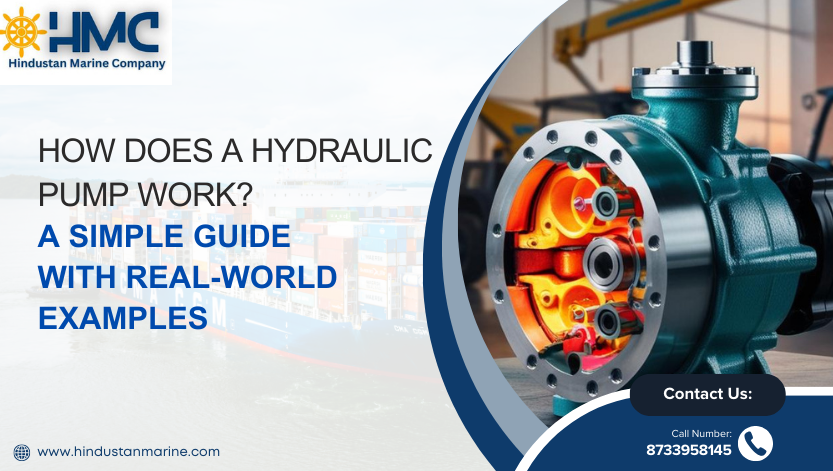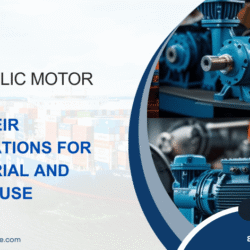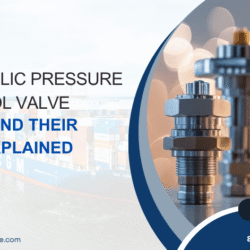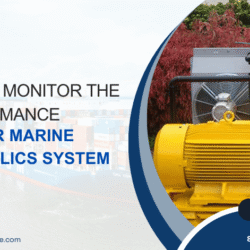
How Does a Hydraulic Pump Work? A Simple Guide with Real-World Examples
Hydraulics power everything from construction machinery to marine systems and even your car’s brake pedal. But the heart of this system is the hydraulic pump — the component that converts mechanical energy into fluid power. If you’re wondering how does a hydraulic pump work, you’re in the right place. Let’s explore how Hydraulic Pump Equipments operate, what types exist, and why they’re essential in industries like manufacturing, construction, and shipping.
What Is a Hydraulic Pump?
A hydraulic pump is a mechanical device that converts mechanical power into hydraulic energy. It does this by moving hydraulic fluid (usually oil) through a system to generate force and motion. The pressure created by the pump powers actuators, cylinders, or motors to perform tasks like lifting, pushing, and rotating.
How Does a Hydraulic Pump Work?
At the core of any hydraulic pump is a simple principle: fluid movement creates force. Here’s a step-by-step breakdown:
- Mechanical Energy Input:
A motor (electric or diesel) drives the hydraulic pump’s shaft. - Creation of Low Pressure Zone:
The rotation of internal parts (gears, pistons, or vanes) creates a low-pressure zone, drawing hydraulic fluid from the reservoir. - Pressurizing the Fluid:
The fluid is trapped and moved through the pump to a higher-pressure zone. - Discharge:
The high-pressure fluid is then discharged through outlets into the hydraulic system to perform work (e.g., lifting a crane arm).
In short, a hydraulic pump doesn’t create pressure directly—it generates flow. Pressure occurs when that flow meets resistance in the system.
Types of Hydraulic Pumps
1. Gear Pumps (External or Internal)
- Uses rotating gears to transfer fluid
- Simple and cost-effective
- Suitable for fixed-displacement systems
2. Piston Pumps
- Offers higher efficiency
- Used in variable-displacement systems
- Common in heavy-duty construction and marine equipment
3. Vane Pumps
- Uses sliding vanes in a rotor
- Quieter operation
- Suitable for mid-pressure applications
4. Hydrostatic (Closed Loop) Pumps
- Found in tractors and mobile machinery
- Used in high-precision tasks
- Pump output is balanced by system load
5. Two-Stage Pumps
- Combines high-flow and high-pressure outputs
- Common in log splitters and compact machines
Where Are Hydraulic Pumps Used?
| Industry | Application |
| Construction | Excavators, loaders, bulldozers |
| Marine | Winches, steering, hatch covers |
| Automotive | Brake systems, power steering |
| Agriculture | Tractors, harvesters, hydraulic sprayers |
| Manufacturing | Press machines, conveyor systems |
Benefits of Using Hydraulic Pumps
- High Power Density:
Can lift or move heavy loads with compact systems - Smooth Control:
Offers precision in force and speed - Durability:
With proper maintenance, pumps last for years under high-pressure tasks - Versatile Use:
Works across land-based and marine operations - Scalable:
Can be adapted to small tools or massive ships
Latest Innovations in Hydraulic Pump Systems (2025)
- Electro-Hydraulic Integration
Combines hydraulic power with electric control for automation. - Smart Sensors & IoT
Real-time monitoring for temperature, flow rate, and pressure. - Eco-Friendly Fluids
Use of biodegradable and fire-resistant fluids for safer operations. - Noise-Reducing Designs
Especially in vane pumps and closed-loop systems.
Maintenance Tips for Long-Lasting Hydraulic Pumps
- Regularly Check Oil Levels and Cleanliness
- Inspect Hoses for Leaks or Damage
- Keep Filters Clean and Replace Periodically
- Monitor System Pressure and Temperature
- Perform Scheduled System Flushing
Conclusion
Understanding how does a hydraulic pump work helps you appreciate the backbone of modern machinery. These devices translate mechanical motion into powerful fluid energy, driving operations across industries. Whether you’re dealing with marine systems or factory machinery, investing in high-quality Hydraulic Pump Equipments ensures reliable, efficient, and long-term performance.
FAQs – People Also Ask
1. How does a hydraulic pump generate pressure?
A hydraulic pump creates fluid flow. Pressure occurs when this flow encounters resistance in the system.
2. What is the working principle of a hydraulic pump?
It uses mechanical energy to create flow by drawing in fluid and forcing it through a pressurized system.
3. What are the different types of hydraulic pumps?
Gear, piston, vane, hydrostatic, and two-stage pumps are the most commonly used types.
4. Where are hydraulic pumps used?
They’re widely used in marine, construction, agriculture, automotive, and manufacturing industries.
5. How can I maintain my hydraulic pump system?
Regular oil checks, filter cleaning, hose inspections, and timely servicing ensure a long pump life.





 Fast Delivery
Fast Delivery Easy Returns
Easy Returns Instant Quote
Instant Quote Product Demo
Product Demo